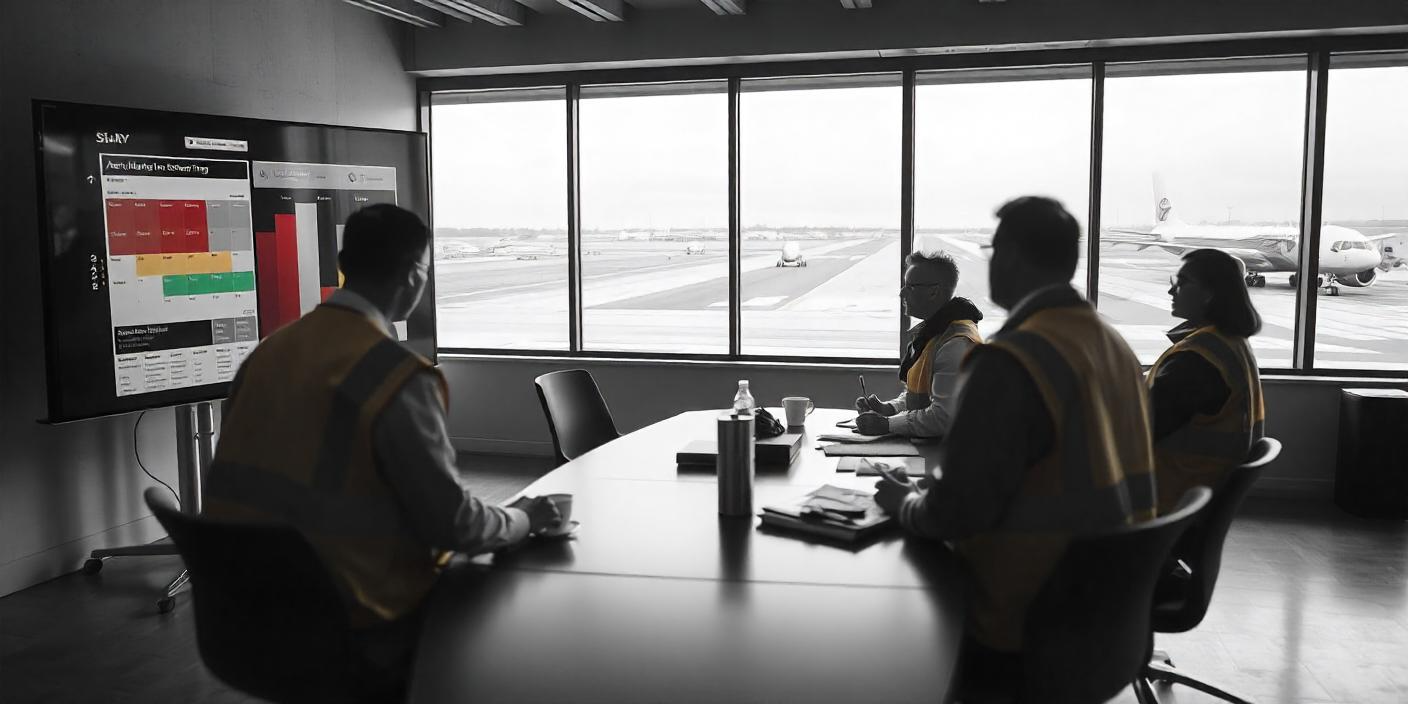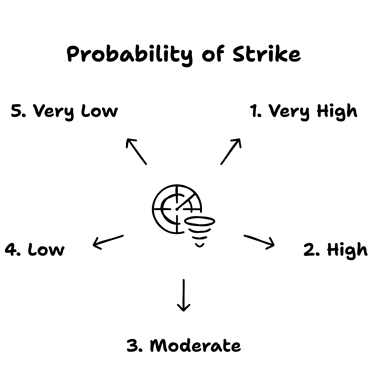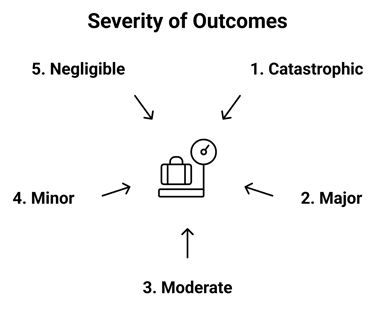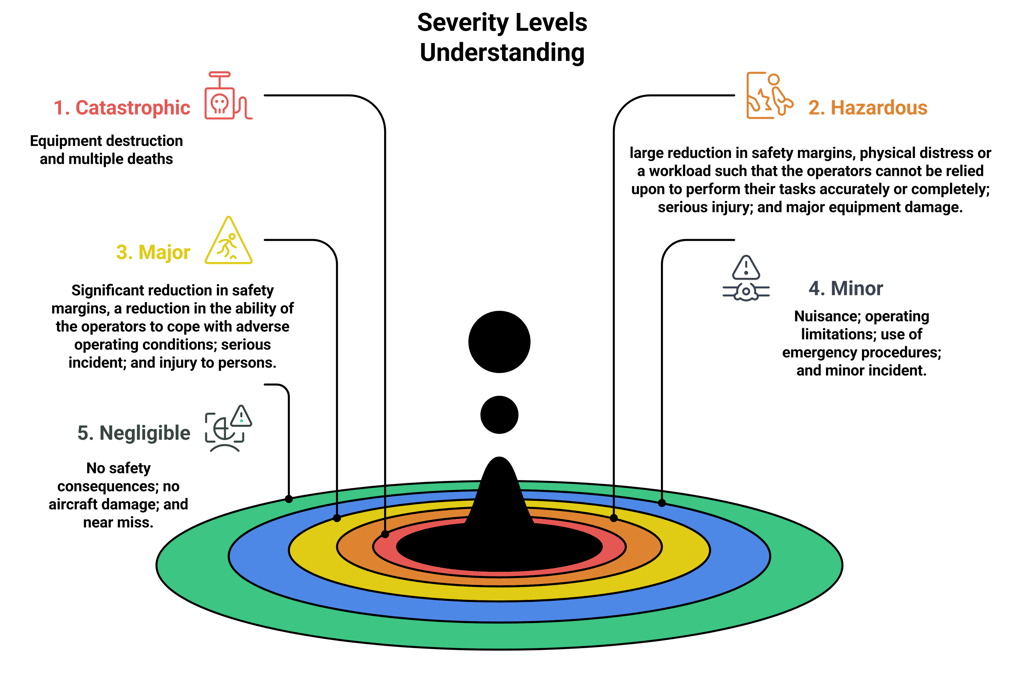Structured Safety: Exploring Risk Assessment Frameworks for Wildlife Hazards
This article delves into the formal methodologies airports use to quantify and prioritize wildlife hazards. By examining risk assessment frameworks—particularly those guided by ICAO Doc 9137 Part 3—readers will discover how aerodromes systematically evaluate threats and develop targeted mitigation plans.
FUNDAMENTALS OF WILDLIFE HAZARD MANAGEMENT
Waleed MAHROUS
1/28/20254 min read


Wildlife hazards pose a significant threat to aviation safety, and aerodromes worldwide employ structured risk assessment frameworks to quantify and prioritize these risks. By examining these methodologies, particularly those guided by ICAO Doc 9137 Part 3, we can understand how aerodromes systematically evaluate threats and develop targeted mitigation plans.
The Foundation of Risk Assessment
The ICAO Airport Services Manual Part 3 - Wildlife Hazard Management (Doc 9137-P3) provides the cornerstone for wildlife hazard management at aerodromes. This document outlines the essential components of a comprehensive Wildlife Hazard Management Programme (WHMP), emphasizing the importance of risk assessment in developing effective strategies.
Key Components of Risk Assessment Frameworks
Defining the Area of Assessment
Risk assessment begins by clearly defining the area to be evaluated. This typically includes the entire aerodrome and may extend to take-off routes and landing approaches when significant wildlife hazards are present in these zones.
Probability and Severity Analysis
A fundamental aspect of risk assessment involves ranking the probability of a wildlife strike and the potential severity of its outcome. Many frameworks use a scale with multiple levels to quantify these factors. For instance:
Probability of Strike:
Very High.
High.
Moderate.
Low.
Very Low.
Severity of Outcome:
Catastrophic.
Major.
Moderate.
Minor.
Negligible.
Risk Matrix Development
By combining probability and severity ratings, aerodromes can create a risk matrix that helps prioritize wildlife hazards. This allows for a systematic approach to addressing the most critical risks first.






Risk Matrix Development
By combining probability and severity ratings, aerodromes can create a risk matrix that helps prioritize wildlife hazards. This allows for a systematic approach to addressing the most critical risks first.
Data Collection and Analysis
Effective risk assessment relies heavily on comprehensive data collection and analysis. Key data points include:
Wildlife strike reports.
Daily wildlife activity observations.
Habitat surveys.
Seasonal wildlife population trends.
GIS technology has become an invaluable tool in this process, allowing for spatial and temporal analysis of wildlife patterns.
Species-Specific Risk Evaluation
Risk assessment frameworks often include methodologies for evaluating risks associated with specific wildlife species. Factors considered may include:
Size and weight of the species.
Flocking behavior.
Time spent in critical airspace.
Ability to avoid aircraft.
Habitat and Land Use Assessment
A crucial component of risk assessment involves evaluating habitats and land use both on the aerodrome and in surrounding areas. This helps identify potential wildlife attractants and informs habitat management strategies.
Continuous Monitoring and Adaptation
Risk assessment is not a one-time event but an ongoing process. ICAO Doc 9137 emphasizes the importance of continuous monitoring and adaptation of risk assessment methodologies to account for changing environmental conditions and wildlife behaviors.
Standardization and International Collaboration
While specific risk assessment methodologies may vary across regions, there is a growing trend towards standardization. The European Union Aviation Safety Agency (EASA), for example, provides guidance on risk assessment methodologies to ensure consistency across European aerodromes.
Conclusion
Structured risk assessment frameworks are essential tools in managing wildlife hazards at aerodromes. By systematically evaluating threats, prioritizing risks, and developing targeted mitigation strategies, these frameworks contribute significantly to aviation safety. As our understanding of wildlife behavior and ecology continues to evolve, so too will these risk assessment methodologies, ensuring that aerodromes remain at the forefront of wildlife hazard management.
Citations
https://store.icao.int/en/airport-services-manual-part-iii-wildlife-hazard-management-doc-9137p3
https://www.icao.int/MID/Documents/2018/WHMC-December/2-4%20Wildlife%20Hazards%20Management.pdf
https://www.faa.gov/documentLibrary/media/Advisory_Circular/150-5200-38.pdf
https://www.caa.gov.om/upload/files/Guidance%20for%20WildLife%20Hazard%20Managemement%20v2.0.pdf
https://www.flysfo.com/about/sustainability/environmental-affairs/wildlife-hazard-management-plan
https://flightsafety.org/asw-article/it-for-wildlife-management/
https://galeassociates.com/2017/09/20/wildlife-management-and-safety-at-your-airport/
https://www.aphis.usda.gov/sites/default/files/1-introduction.pdf
https://www.aphis.usda.gov/sites/default/files/WS%20airports%20performance%20report_Public.pdf
https://www.jcaa.gov.jm/wp-content/uploads/2017/01/JCAA-Wildlife-Hazard-Management-Manual-Signed.pdf



